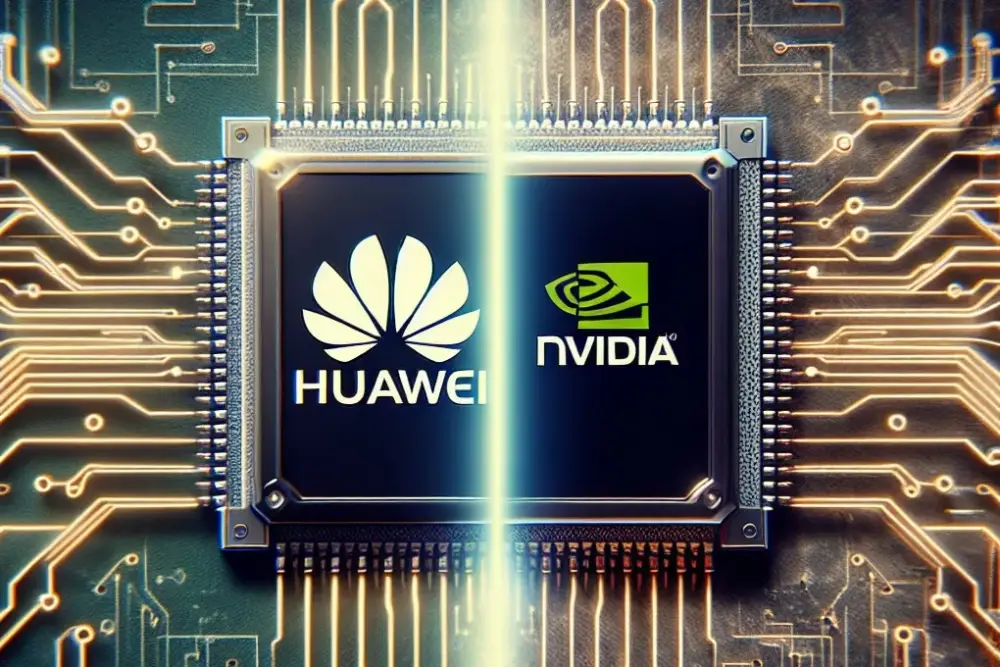
Trung Quốc bắt buộc trung tâm dữ liệu dùng 50% chip AI nội địa thay Nvidia
-
Chính phủ Trung Quốc vừa ban hành quy định yêu cầu các trung tâm dữ liệu công cộng phải sử dụng trên 50% chip AI nội địa, nhằm giảm phụ thuộc vào công nghệ Mỹ giữa bối cảnh Washington siết chặt kiểm soát xuất khẩu bán dẫn.
-
Chính sách bắt nguồn từ hướng dẫn của Thượng Hải tháng 3/2024, đặt mục tiêu đến năm 2025 các trung tâm tính toán thông minh của thành phố phải vượt ngưỡng 50% chip nội địa. Từ đầu 2025, quy định này đã trở thành chính sách toàn quốc.
-
Hơn 500 dự án trung tâm dữ liệu mới được công bố tại Trung Quốc trong 2023–2024, trải dài từ Nội Mông đến Quảng Đông, nhằm đáp ứng nhu cầu bùng nổ của AI tạo sinh.
-
Các chip Nvidia H100, H800 bị Mỹ cấm xuất sang Trung Quốc, trong khi chip H20 vừa được dỡ bỏ hạn chế vẫn bị Bắc Kinh nghi ngờ về rủi ro an ninh mạng. Nvidia phủ nhận cáo buộc này.
-
Chip nội địa, điển hình Huawei Ascend, hiện đáp ứng được suy luận (inference) trên mô hình đã huấn luyện, nhưng còn yếu trong huấn luyện AI mới. Vì vậy, Nvidia vẫn là lựa chọn hàng đầu cho phần lớn nhà phát triển.
-
iFlytek (đang bị Mỹ trừng phạt) là công ty Trung Quốc duy nhất công khai dùng chip Huawei để huấn luyện mô hình AI.
-
Vấn đề lớn: hệ sinh thái phần mềm. Nvidia sở hữu CUDA, Huawei dùng CANN. Việc chuyển đổi mô hình giữa hai nền tảng gây tốn công và rủi ro cho các trung tâm dữ liệu.
-
Công ty SiliconFlow (Bắc Kinh) hợp tác với Huawei xây dựng giải pháp tối ưu DeepSeek R1 trên kiến trúc Cloud Matrix 384 và chip Ascend, đạt hiệu quả vượt Nvidia H800, theo nghiên cứu công bố tháng 6/2025.
-
Tuy vậy, nhiều trung tâm dữ liệu bình thường không đủ kỹ sư trình độ cao để xử lý thách thức tích hợp chip hỗn hợp, khiến quá trình “nội địa hóa” chip AI gặp khó khăn.
📌 Trung Quốc ban hành quy định buộc trung tâm dữ liệu phải dùng trên 50% chip AI nội địa, trong bối cảnh Mỹ cấm xuất khẩu H100/H800. Hơn 500 dự án mới khởi động từ 2023–2024, nhưng chip Huawei Ascend vẫn yếu ở huấn luyện mô hình. SiliconFlow + Huawei chứng minh DeepSeek R1 chạy hiệu quả hơn Nvidia H800, song phần lớn trung tâm dữ liệu gặp khó do rào cản phần mềm (CUDA vs CANN). Chính sách thể hiện quyết tâm tự chủ bán dẫn nhưng đi kèm thách thức kỹ thuật lớn.
https://www.scmp.com/tech/tech-war/article/3322119/china-mandates-more-domestic-ai-chips-data-centres-cut-reliance-nvidia
China mandates more domestic AI chips for data centres to cut reliance on Nvidia
Thảo luận
Follow Us
Tin phổ biến



